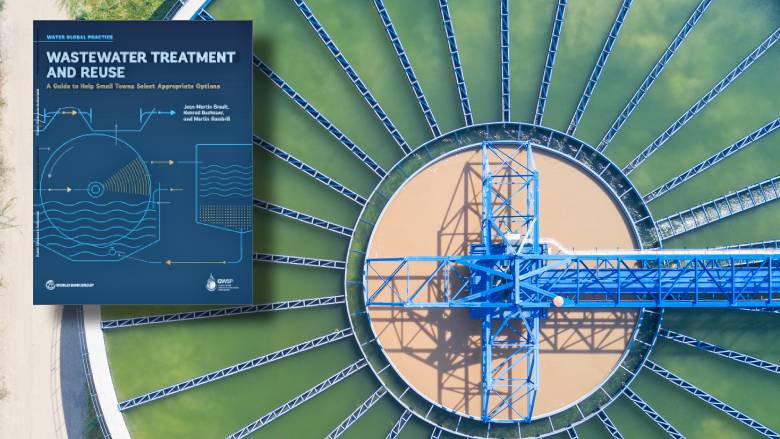Trick Difficulties in Urban Waste Water Treatment Approaches
Trick Difficulties in Urban Waste Water Treatment Approaches
Blog Article
Strategic Approaches to Improve Waste Water Treatment Efficiency and Lessen Environmental Effect
In the world of waste water therapy, the mission for improved efficiency and minimized environmental effect is a perpetual difficulty that demands critical services. The integration of advanced treatment modern technologies, energy-efficient procedures, resource healing strategies, boosted nutrient elimination strategies, and smart monitoring and control systems represents a complex structure for resolving these pushing problems.
Advanced Therapy Technologies
Advanced membrane filtration systems have transformed advanced wastewater treatment processes, substantially enhancing the elimination of pollutants. These ingenious systems function forcibly water via a semi-permeable membrane, successfully dividing contaminations from the water stream. The membrane's tiny pores trap contaminants such as germs, viruses, and put on hold solids, enabling only detoxified water to pass through. This technology has confirmed to be extremely efficient in eliminating a vast array of contaminants, including pharmaceuticals, hefty steels, and natural substances, which are frequently testing to eliminate via conventional treatment approaches.
Moreover, membrane filtering systems use numerous benefits over conventional therapy approaches. They call for much less room, create higher-quality effluent, and are extra immune to fluctuations in influent water high quality. Additionally, these systems are extremely versatile and can be easily incorporated right into existing therapy plants or used as standalone units for decentralized applications. As the demand for clean water proceeds to increase, the adoption of sophisticated membrane layer purification innovations is vital to make sure sustainable and efficient wastewater therapy practices.
Energy-Efficient Procedures
The combination of energy-efficient processes in wastewater treatment systems is critical for maximizing source usage and minimizing functional expenses. By carrying out energy-efficient technologies, therapy plants can significantly reduce their carbon impact and general environmental impact. One essential strategy to enhancing energy performance in wastewater therapy is the utilization of innovative oygenation systems, such as fine bubble diffusers or surface aerators, which can boost oxygen transfer effectiveness and minimize energy usage. Additionally, integrating power recuperation systems, like anaerobic food digestion for biogas production or using excess heat for thermal procedures, can assist offset power needs and promote sustainability.
Moreover, optimizing process control and automation with making use of innovative sensing units and keeping track of systems can enhance total energy efficiency by adjusting procedures in real-time based on actual demand and problems. Implementing energy audits and on a regular basis monitoring power performance signs are important techniques to identify areas for renovation and track energy-saving efforts properly. In general, the fostering of energy-efficient processes in wastewater therapy not just profits the setting yet also contributes to long-term price savings and operational sustainability.
Resource Recuperation Techniques
With an emphasis on maximizing resource application and sustainability in wastewater treatment systems, the implementation of resource healing strategies becomes an essential element in boosting functional efficiency. Resource healing approaches in wastewater therapy include the recognition and removal of useful resources from the waste stream, therefore transforming what was when considered waste into click resources a useful property. By applying resource recovery strategies such as nutrient removal and recuperation, energy generation from raw material, and the production of reusable water, wastewater treatment plants can lessen environmental influence while maximizing efficiency.

Boosted Nutrient Removal Methods
Carrying out advanced nutrient elimination strategies is important for maximizing the effectiveness of wastewater treatment systems. One of the key methods utilized for enhanced nutrient elimination is the process of organic nutrient removal (BNR), which involves the removal of nitrogen and phosphorus through organic processes.
In enhancement to BNR, progressed treatment techniques such as membrane bioreactors (MBRs) and constructed marshes can additionally be utilized to enhance nutrient elimination performance. By integrating these advanced nutrient elimination methods into wastewater treatment sectors, communities and systems can properly decrease nutrient pollution and shield the environment.
Smart Monitoring and Control Equipment
Making use of advanced innovation, the read this combination of smart tracking and control systems transforms the operational performance of wastewater treatment facilities. These systems integrate advanced sensors and data analytics to constantly keep an eye on essential parameters such as pH levels, turbidity, liquified oxygen, and circulation rates in real-time. By gathering and analyzing this information, operators can acquire valuable understandings into the performance of the therapy processes, allowing positive modifications to enhance therapy effectiveness.
Smart monitoring and control systems also sustain remote surveillance abilities, permitting operators to accessibility real-time data and control features from off-site areas. This remote ease of access improves functional adaptability and responsiveness, allowing quick interventions in instance of system breakdowns or changes in influent quality. In addition, the predictive maintenance abilities of these systems assist prevent tools failings and decrease downtime, eventually enhancing the overall integrity of wastewater treatment procedures (Waste Water Treatment).
Verdict
Finally, strategic strategies such as advanced treatment technologies, energy-efficient procedures, resource recuperation strategies, enhanced nutrient click here to read elimination strategies, and smart monitoring and control systems play an important function in improving wastewater therapy efficiency and lessening environmental impact. By applying these strategies, wastewater therapy plants can enhance their general performance, minimize energy consumption, recoup important resources, and guarantee conformity with ecological guidelines. These methods are crucial for efficient and sustainable wastewater administration techniques.

In final thought, tactical strategies such as advanced therapy innovations, energy-efficient procedures, source healing techniques, boosted nutrient elimination methods, and clever tracking and control systems play an important duty in improving wastewater therapy efficiency and minimizing environmental influence.
Report this page